#I also enjoy it
Text
what's funny about booktok is they'll actually consider books with the topics they romanticize problematic if those topics aren't romanticized. if you portray something disturbing as disturbing in your book, they think you're a sicko, because they cannot comprehend why someone would write something they aren't "into". I remember watching this one booktok reviewer going over 'disturbing books'. one was a booktok popular story where the love interest sexually assaults the main character (although you're supposed to think she secretly enjoyed it because he's hot! lol) and the other was a book where a man recalls and reflects on essentially getting off on emotionally abusing women. first book with a "woman secretly wanted to be raped" narrative is, according to this reviewer, perfectly fine, but the latter, which is more of a harsh reality, must only exist for Freaks to read. it's a really strange dynamic to me.
#honestly the 'disturbing-as-disturbing' books are much more interesting to me as someone who's experienced the abuse#or if it's romanticized in a way the reader finds disturbing but not the narrator (like lolita)#I also enjoy it
347 notes
·
View notes
Text
when did this happen???
#my art#my animations#dungeon meshi#chilchuck tims#senshi#marcille donato#laios touden#i wanted to color it but i realized how awful my work process is and it wasn't worth it. enjoy anyways#also first frame senshi is slightly traced i'm sorry he's hard to draw from that angle
25K notes
·
View notes
Text
as an aroace, im particularly dangerous, because i wont fuck or marry. i only know how to kill.
#aroace#aromantic#asexual#asexuality#ace#aro#im so glad you guys are enjoying this stupid post i made at work#okay i wrote that at 3000 notes but what the FUCK is happening#10000 notes on this no effort fmk post and not one aspec i know irl#dgmw im still very happy that yall are enjoying this post but also like. come hang out with meeeeee :(
32K notes
·
View notes
Text

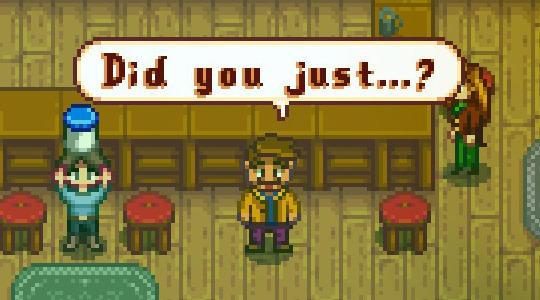
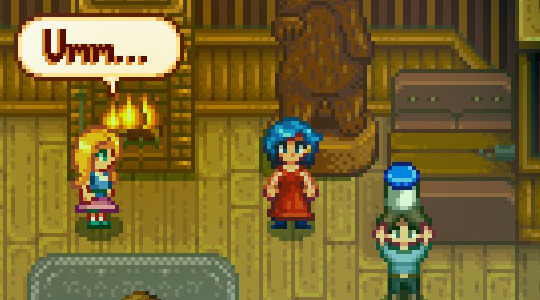

Just having some drinks at the local saloon.
#stardew valley#spoilers#stardew valley spoilers#stardew valley 1.6 update#drinking mayonnaise#also this was during a green rain day#so folks were already freaked out#i am making things worse on purpose haha#anyway i'm obsessed with the fact that you can drink mayo#and i enjoy that i'm properly shamed for it
21K notes
·
View notes
Text

Percy “Has Been Waiting to Use This Meme as an Excuse” Jackson, and Annabeth “Never Seen a Meme” Chase
#this has probably been done before but#i enjoyed making this silly thing this morning#also is annabeth aware of memes in the show???? annabeth how will you bond with Percy#he definitely has a hyper detailed Minecraft world#anyway#pjo series#pjo tv show#percy jackson#percy jackon and the olympians#annabeth chase#fanart#pjo comic#my art#I’ve been really enjoying the show!! i need to reread there’s so much I’ve forgotten
19K notes
·
View notes
Text
Have a meme because I have no self control

Lucifer just seems like the kinda guy who’d lose his mind over ppl being too hot (our bi short king)
I spent way too much effort on this pls like it ily 🙏
Bonus (radioapple) doodles as always (edit: I. I just realised I forgot Al’s monocle in both doodles. I am dying inside. Why did no one tell me.):
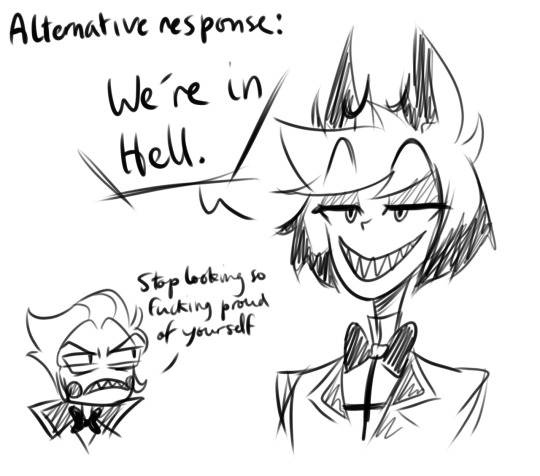
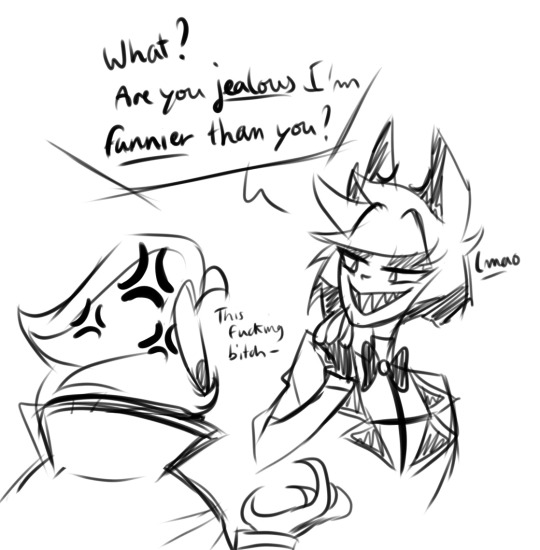
#WHY DO ALL OF THEM HAVE A BOWTIE#As usual my handwriting is dogshit hope u enjoy the meme <3#I know Charlie is bi but that also means she likes girls so ¯\_(ツ)_/¯#Lucifer has a ‘tHIS biTCH’ expression specially for alastor it’s canon viv told me#hazbin#hazbin hotel#hazbin hotel fanart#hazbin hotel art#hazbin hotel fandom#hazbin hotel 2024#hazbin art#hazbin lucifer#hazbin angel dust#hazbin alastor#hazbin hotel charlie#hazbin charlie#hazbin chaggie#hazbin hotel alastor#radio demon#vivziepop#hazbin hotel lucifer#hazbin hotel angel dust#hazbin hotel anthony#angel dust#alastor#alastor hazbin hotel#hazbin hotel husk#husker#chaggie#charlie x vaggie
19K notes
·
View notes
Text
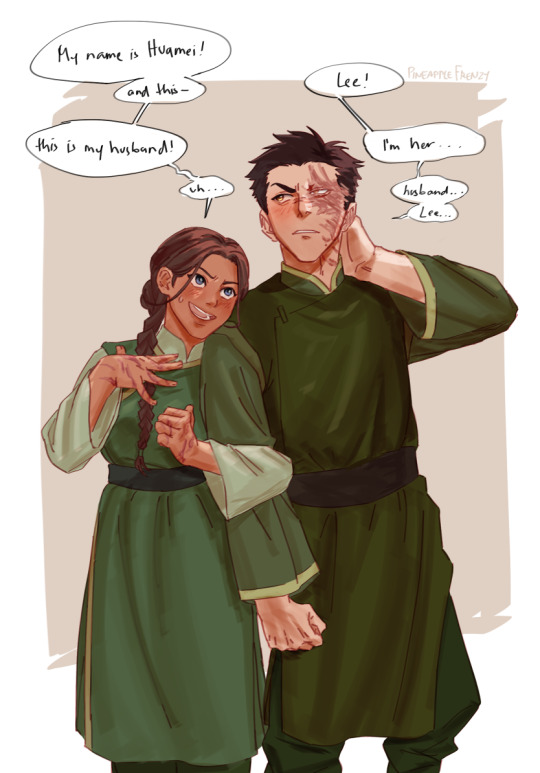

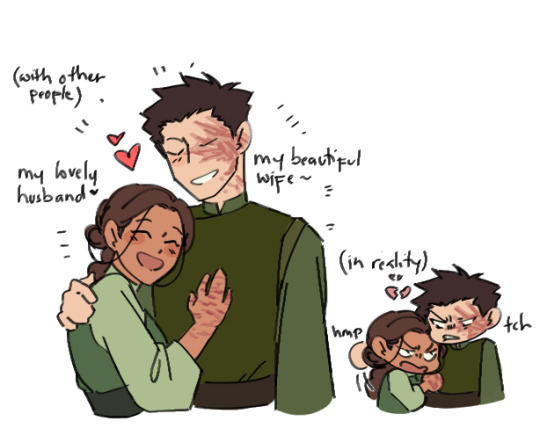
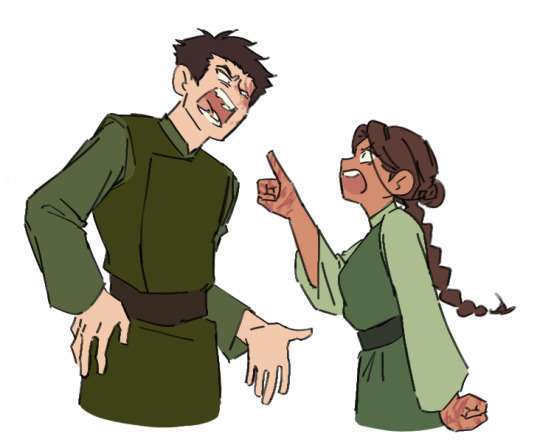


Book 2 au with Zuko and Katara Lee and Huamei
Katara is separated from her friends, and so she's left to travel the earth kingdom on her own. She stumbles across Zuko, who is similarly travelling on his own. They decide that pairing up and travelling together would be best
#zutara#zuko#katara#atla#my art#book 2 au#book 2 aus have been done before but i wanted to try my own take with tropes i personally enjoy akdjslkdks#also had the urge to draw zutara arguing and just not getting along in general qldjkakslsk#i recently finished natla and also just rewatched book 1 so zutara book 1 dynamic where they're quite hostile with each other is on my mind#they decide to travel together but obviously they don't get along at all at the start#they find each other annoying but that annoyance slowly turns into affection#also alsooo#short hair zuko enjoyers hello#i have switched over to the side of short hair zuko ajrskakdlksjd#also thinking about how to put short hair katara into this akdjaljdlskf#i just think short hair zutara neat :>>
11K notes
·
View notes
Text

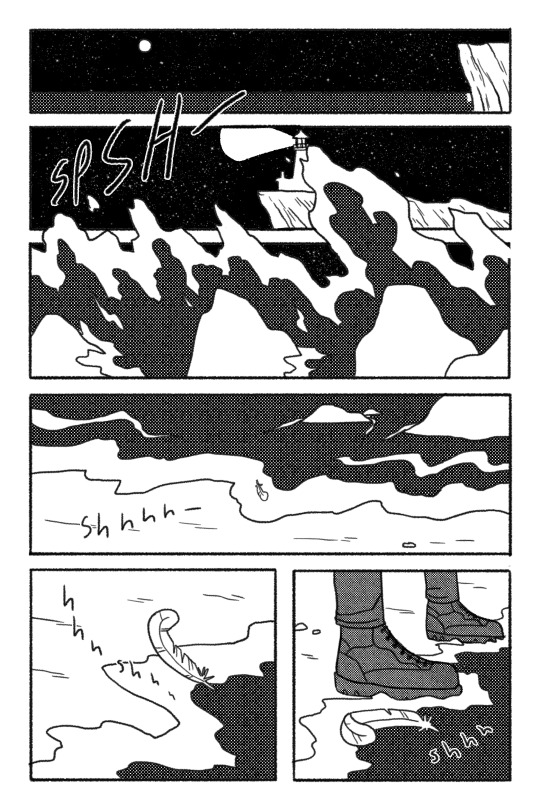
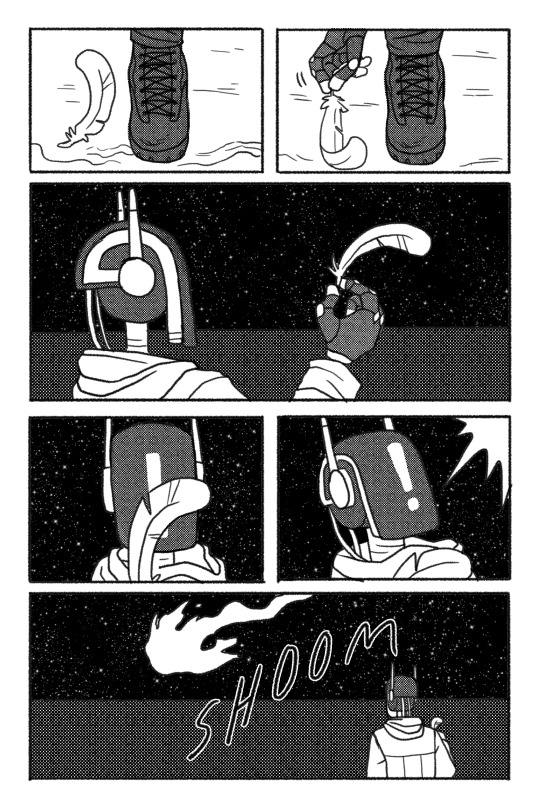







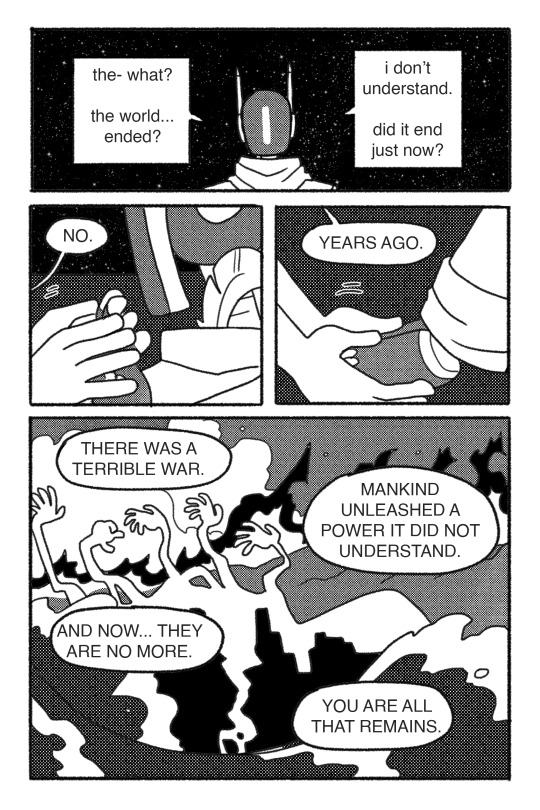




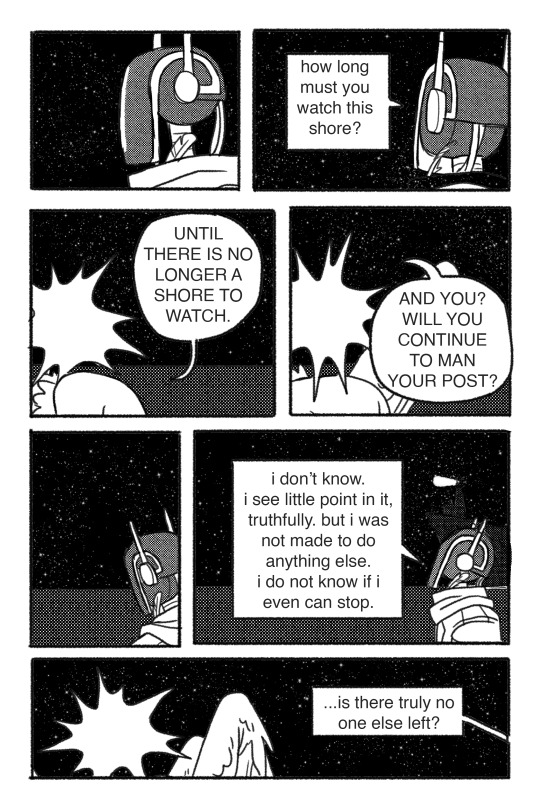



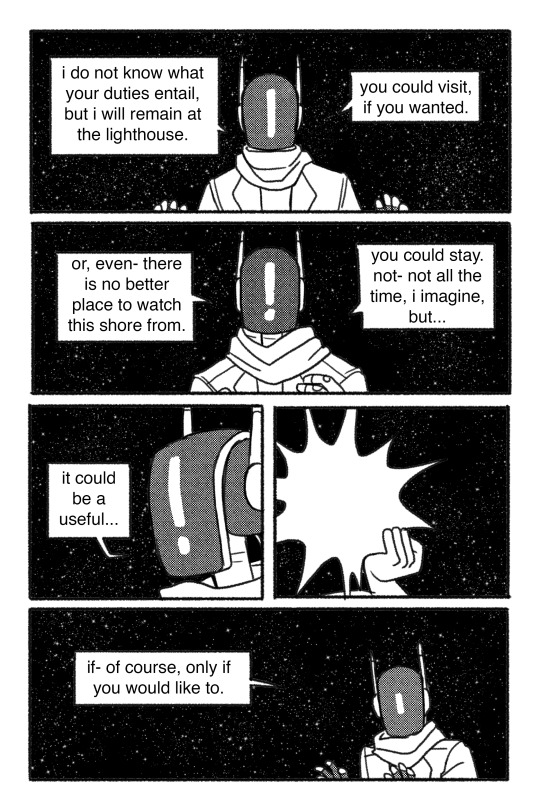
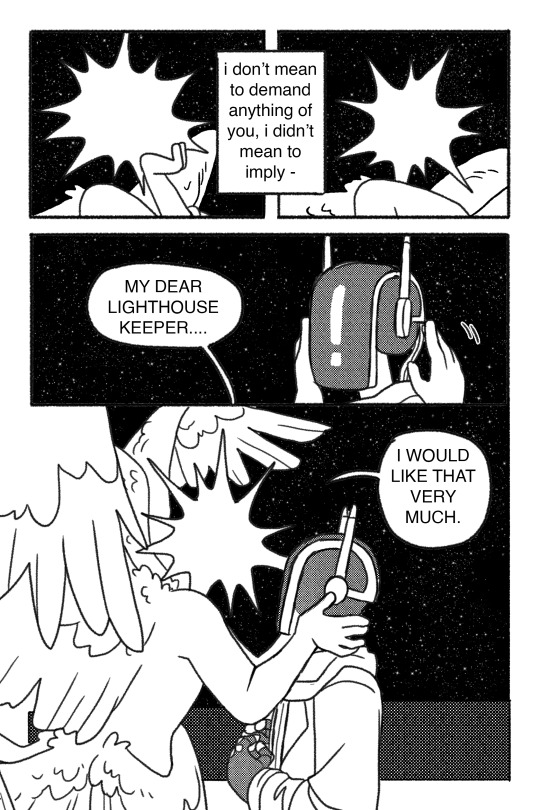

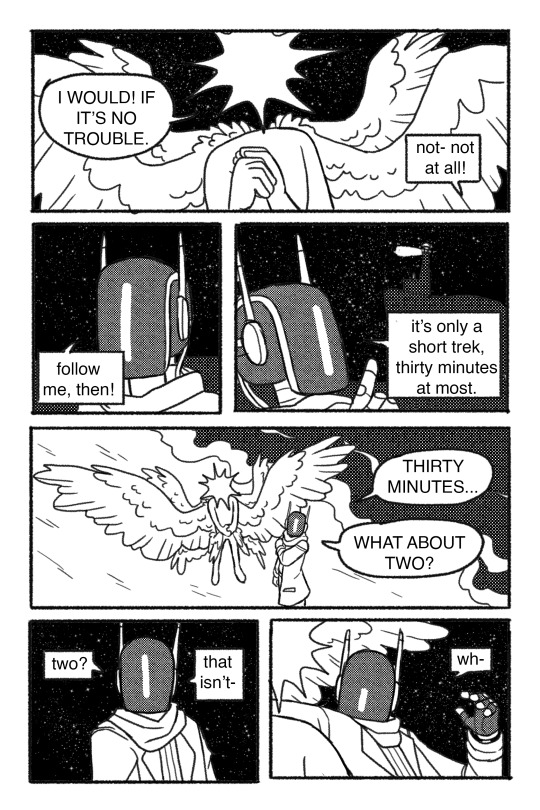
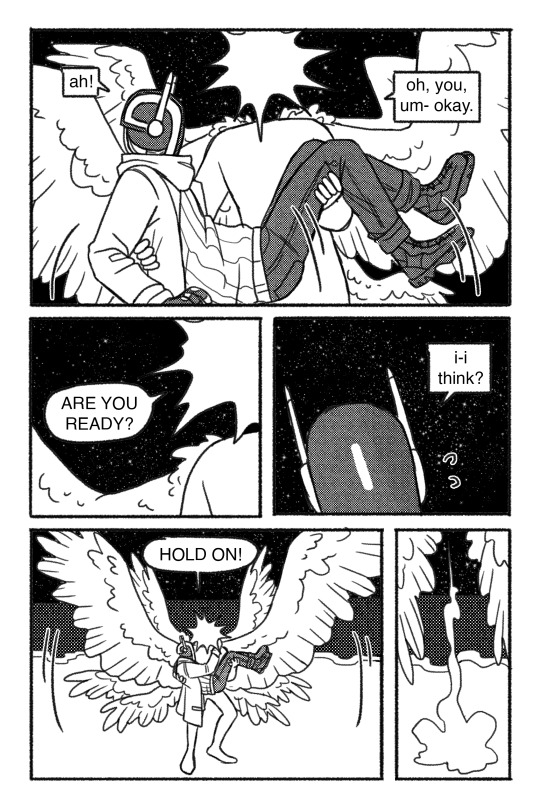

Keeper -- a short comic about an angel meeting a robotic lighthouse keeper that doesn't know the world has already ended. Made in about 18 hours for a 24-hour 24-page* black and white comic challenge (that I arrived late to, ha.)
*the actual submission does not include the cover, which was created after the fact for this post.
This was a really great learning experience as someone who's... never really made a completed comic. I ended up really attached to the story by the end of the project (possibly due to all-nighter deliriousness lol) and ultimately am very proud of what I made.There are some things I'd still like to change, particularly text placement, but in keeping with the spirit of the challenge I've elected to leave it as is.
#sparks art#comic#angel#robot#my art#my comics#keeper: the angel#keeper: the lighthouse keeper#my ocs#hoogh. this was a grind yall lmao. but i am pleased with it#i hope you enjoy :pray: also keep your fingers crossed for me that this wins the contest#like it. it wont. because i am up against actual SEQA kids that know what theyre doing. and i dont actually mind really#but it would be funny#long post#very long post#sorry#i hope the readmore works
31K notes
·
View notes
Text
does anyone have like an anti aesthetic. like something you look at and can recognize as a complete fashion/interior design/artistic movement and understand it but it makes you shudder seeing it. i am not talking like “its morally bad” “its poorly structured” like just sheerly devoid of joy for you actually invites a repulse response.
#also if it wasnt clear this isnt ‘its bad its lazy’ there is a level of like#completion consistancy i am thinking for with this#personally i really do not enjoy the like. vintage chic long red nails fur coats noir esque aesthetic HOWEVER 💥💥💥#i can recognize that it is put together it is Intentional#i feel like a lot of people are going to say minimalism on this so LET ME SAY 🫰☝️ i recognize that minimalism is Considered an aesthetic#but i *PERSONALLY* do not consider it an aesthetic i consider it the void of one#it is a lapse in aesthetic or personality in the same way a silence in a song is still technically a ‘beat’ but no music is played#however the importance of Space or Breath in design is more akin to a purposeful silence in music#because that silence matters in the same way rhythm and breath in design do#so i guess minimalism is more comparable to like. white noise. the sound of a fan#very little effort and there is a comfort in it i suppose but its not. A Design. okay#TO ME 🤫#if minimalism has one hater its me if minimalism has no haters im dead
27K notes
·
View notes
Text
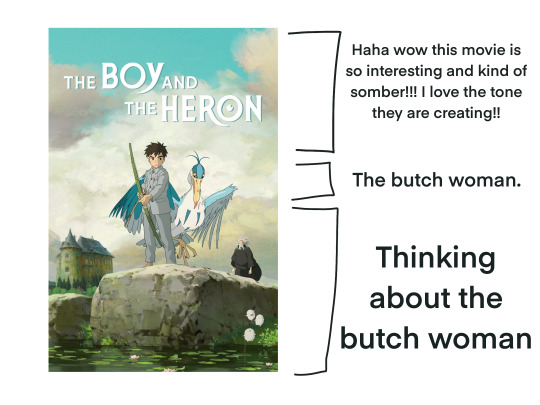
Mostly spoiler free summary of my viewing experience
#The boy and the heron#how do you live#studio ghibli#ghibli#in all honesty that movie was legitimately so fantastic and im like changed as a person#Story wise as well! It hits really hard if you know a bit about miyazaki and his legacy. Its a very personal movie i think#And you can feel it in every aspect#The eng dub voice actors were really good as well and the animation was beautiful as always#Also really loved the tone!!! The story really relied a bit on the use of negative space in both sound and pacing and i enjoyed that alot#in conclusion go read a article about miyazaki and his son and then go watch the movie it’s probably going to be one of my favorites#image id in alt
12K notes
·
View notes
Text
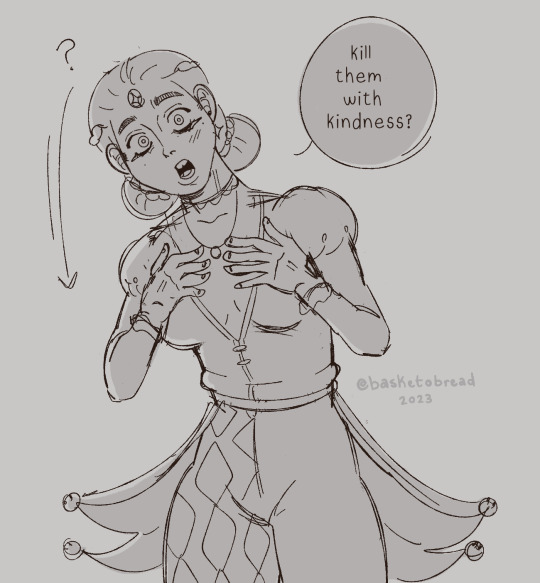


sometimes when the enemy is at like 1 hp, i like to hit them with some good ol vicious mockery because nothing is funnier to me than actually obliterating someone into the next life with a yo mama joke
#baldur’s gate 3#bg3#bg3 fanart#bg3 art#baldurs gate#tav#bg3 tav#bg3 oc#astarion#bg3 astarion#astarion ancunin#astarion x tav#dnd#dnd art#dnd bard#dnd oc#lotus posting#bob the artist#also thank you for the support recently!!!!#im new here so i didnt expect to already have ppl enjoy my art :) very grateful <33
17K notes
·
View notes
Text
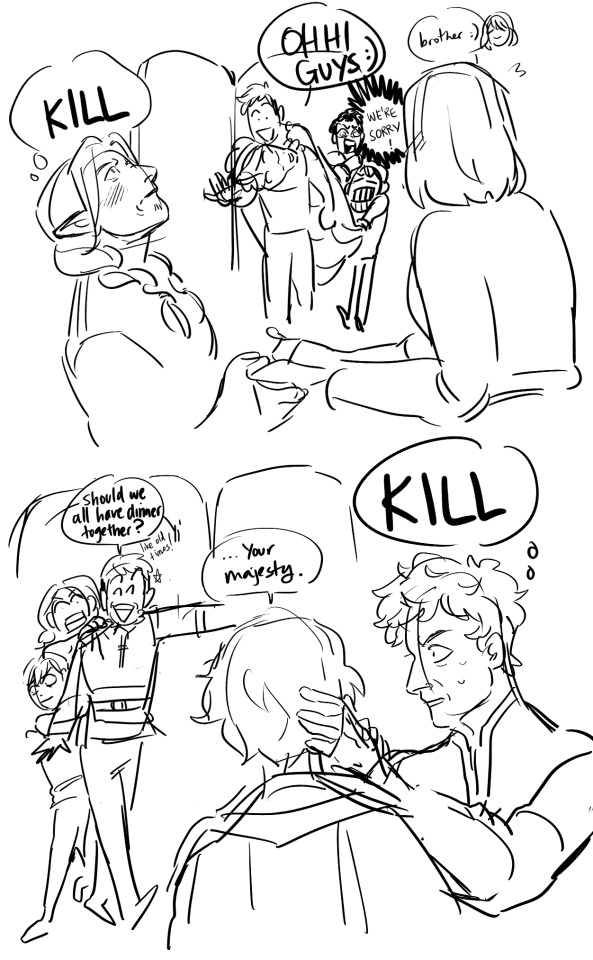

#and also take this one. wont ever clean this but i enjoy the expressions. not much to add here#laios touden#kabumisu#farcille#.. what is chilchuck and his wife ..#chilchuck tims#dungeon meshi#dunmeshi#my art#dunmeshi spoilers
8K notes
·
View notes
Text
Best thing about Doctor Who, and I mean this so genuinely, is the way it goes from ‘haunting Celtic folk mystery about death and penitence’ to ‘what if your group chat banter was so dire that your phone developed sentience and tried to kill you’
#doctor who#dw#but in seriousness i really liked the ending of this one - very effectively unpleasant#also thought it was very funny that last week they tried to convince us that a 19 year old was 40 simply by giving her unflattering glasses#am enjoying this series :)#73 yards#dot and bubble
6K notes
·
View notes
Text
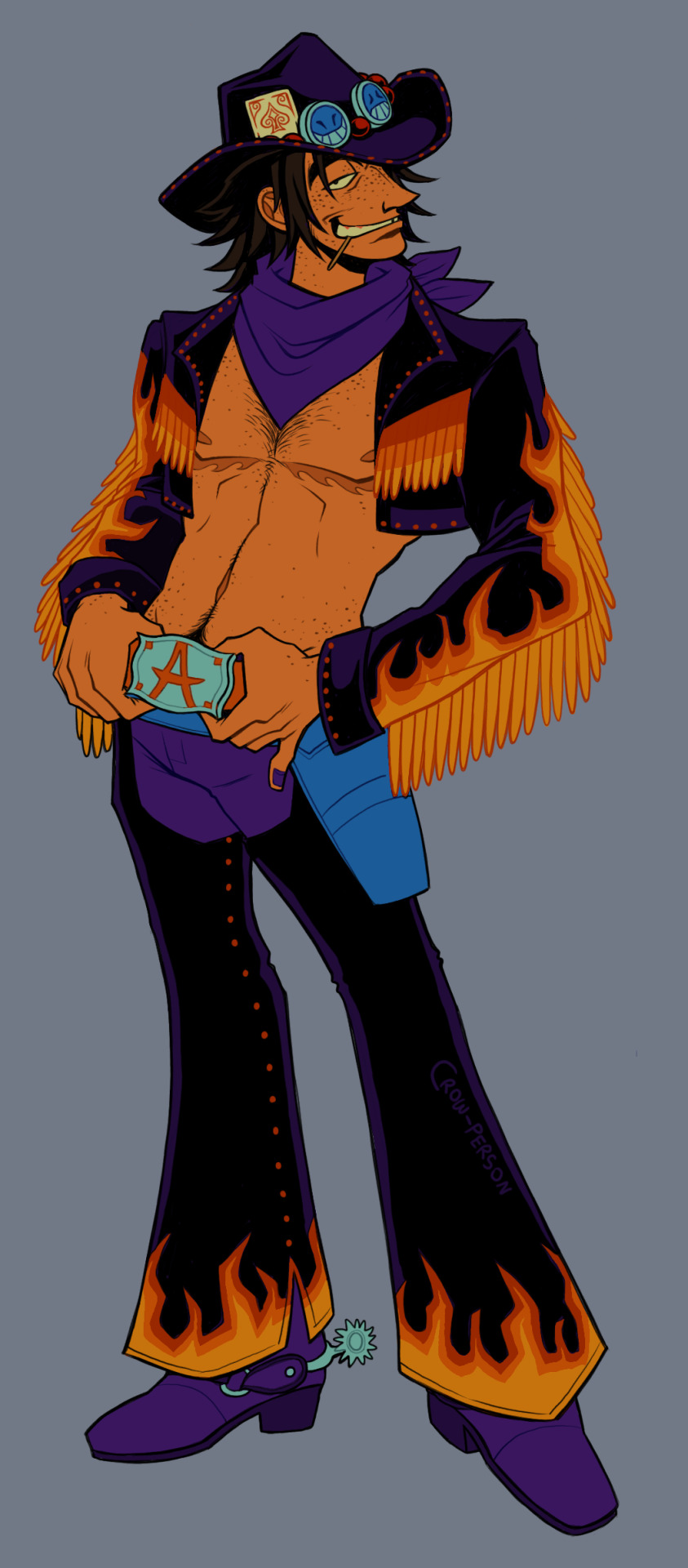
save a horse ride a cowboy !!!!
#one piece#portgas d ace#my art#silly littol cowboy ace design i've been thinking about#i am a weak man#freckels are my weakness#also jesus christ tysm everyone for all of the lovely repost and comments on my art#makes me really happy that ppl enjoy my art and it bringing ppl a little joy <3 <3 <3
5K notes
·
View notes
Text
What does life in North Korea look like outside of Pyongyang? 🇰🇵
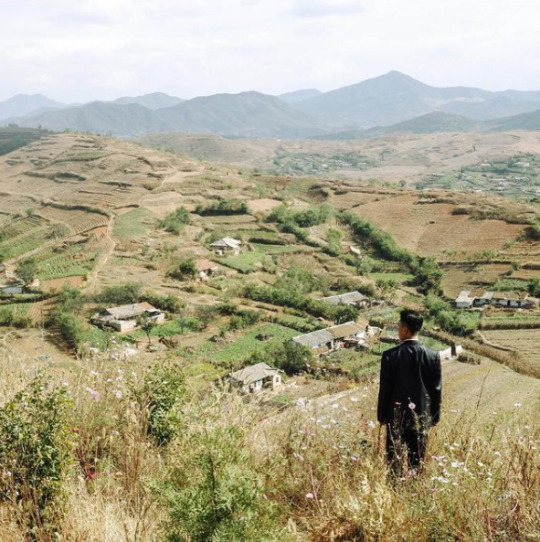
Hey, I'm back again with a very scary "tankie" post that asks you to think of North Koreans as people, and to consider their country not as a cartoonish dystopia, but as a nation that, like any other place on earth, has culture, traditions, and history.
Below is a collection of pictures from various cities and places in North Korea, along with a brief dive into some of the historical events that informs life in the so-called "hermit kingdom."
Warning: very long post
Kaesong, the historic city
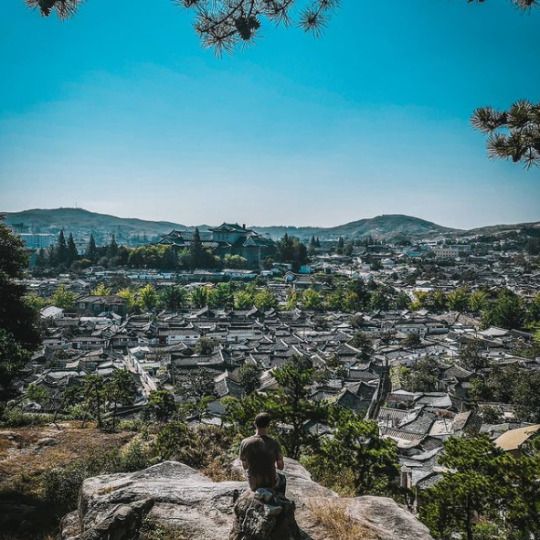
Beginning this post with Kaesong, one of the oldest cities in Korea. It's also one of the few major cities in the DPRK (i.e. "North Korea") that was not completely destroyed during the Korean war.
Every single city you'll see from this point on were victims of intense aerial bombardments from the U.S. and its allies, and had to be either partially or completely rebuilt after the war.
From 1951 to 1953, during what has now become known as the "forgotten war" in the West, the U.S. dropped 635,000 tons of bombs over Korea — most of it in the North, and on civilian population centers. An additional 32,000 tons of napalm was also deployed, engulfing whole cities in fire and inflicting people with horrific burns:
For such a simple thing to make, napalm had horrific human consequences. A bit of liquid fire, a sort of jellied gasoline, napalm clung to human skin on contact and melted off the flesh. Witnesses to napalm's impact described eyelids so burned they could not be shut and flesh that looked like "swollen, raw meat." - PBS
Ever wondered why North Koreans seem to hate the U.S so much? Well...
Keep in mind that only a few years prior to this, the U.S. had, as the first and only country in the world, used the atomic bomb as a weapon of war. Consider, too, the proximity between Japan and Korea — both geographically and as an "Other" in the Western imagination.
As the war dragged on, and it became clear the U.S. and its allies would not "win" in any conventional sense, the fear that the U.S. would resort to nuclear weapons again loomed large, adding another frightening dimension to the war that can probably go a long way in explaining the DPRK's later obsession with acquiring their own nuclear bomb.
But even without the use of nuclear weapons, the indiscriminate attack on civilians, particularly from U.S. saturation bombings, was still horrific:
"The number of Korean dead, injured or missing by war’s end approached three million, ten percent of the overall population. The majority of those killed were in the North, which had half of the population of the South; although the DPRK does not have official figures, possibly twelve to fifteen percent of the population was killed in the war, a figure close to or surpassing the proportion of Soviet citizens killed in World War II" - Charles K. Armstrong
On top of the loss of life, there's also the material damage. By the end of the war, the U.S. Air Force had, by its own estimations, destroyed somewhere around 85% of all buildings in the DPRK, leaving most cities in complete ruin. There are even stories of U.S. bombers dropping their loads into the ocean because they couldn't find any visible targets to bomb.
What you'll see below of Kaesong, then, provides both a rare glimpse of what life in North Korea looked like before the war, and a reminder of what was destroyed.

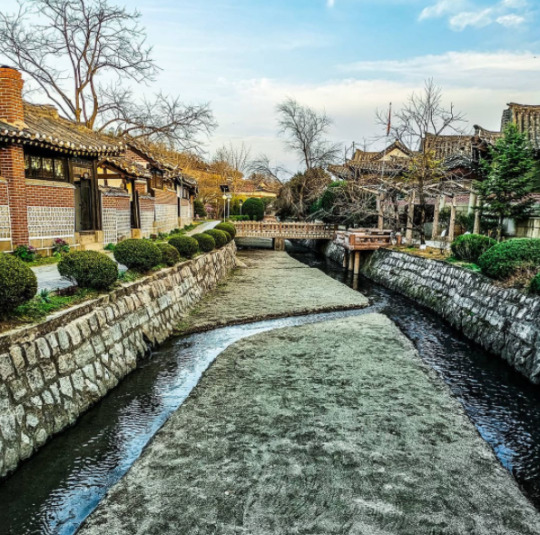

Kaesong's main street, pictured below.
Due the stifling sanctions imposed on the DPRK—which has, in various forms and intensities, been in effect since the 1950s—car ownership is still low throughout the country, with most people getting around either by walking or biking, or by bus or train for longer distances.
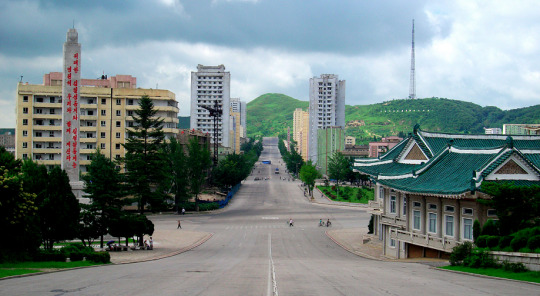
Kaesong, which is regarded as an educational center, is also notable for its many Koryŏ-era monuments. A group of twelve such sites were granted UNESCO world heritage status in 2013.
Included is the Hyonjongnung Royal Tomb, a 14th-century mausoleum located just outside the city of Kaesong.
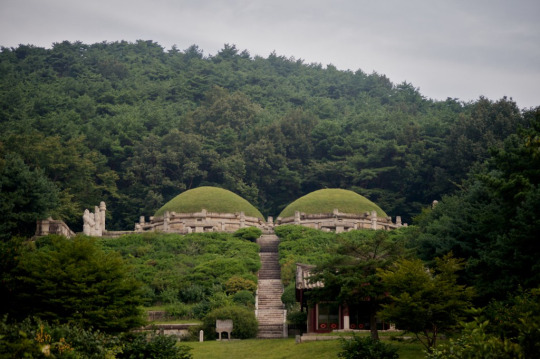
One of the statues guarding the tomb.
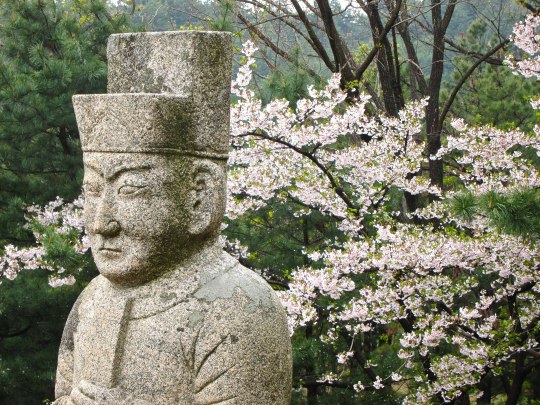
Before moving on the other cities, I also wanted to showcase one more of the DPRK's historical sites: Pohyonsa, a thousand-year-old Buddhist temple complex located in the Myohyang Mountains.

Like many of DPRK's historic sites, the temple complex suffered extensive damage during the Korean war, with the U.S. led bombings destroying over half of its 24 pre-war buildings.
The complex has since been restored and is in use today both as a residence for Buddhist monks, and as a historic site open to visitors.


Hamhung, the second largest city in the DPRK.
A coastal city located in the South Hamgyŏng Province. It has long served as a major industrial hub in the DPRK, and has one of the largest and busiest ports in the country.
Hamhung, like most of the coastal cities in the DPRK, was hit particularly hard during the war. Through relentless aerial bombardments, the US and its allies destroyed somewhere around 80-90% percent of all buildings, roads, and other infrastructure in the city.
Now, more than seventy years later, unexploded bombs, mortars and pieces of live ammunition are still being unearthed by the thousands in the area. As recently as 2016, one of North Korea's bomb squads—there's one in every province, faced with the same cleanup task—retrieved 370 unexploded mortar rounds... from an elementary school playground.
Experts in the DPRK estimate it will probably take over a hundred years to clean up all the unexploded ordnance—and that's just in and around Hamhung.
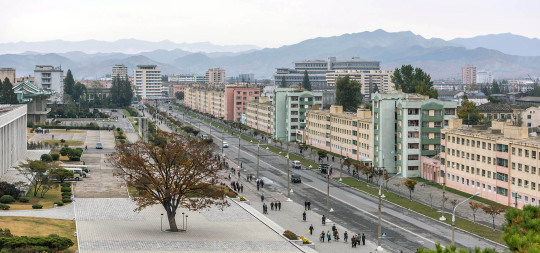

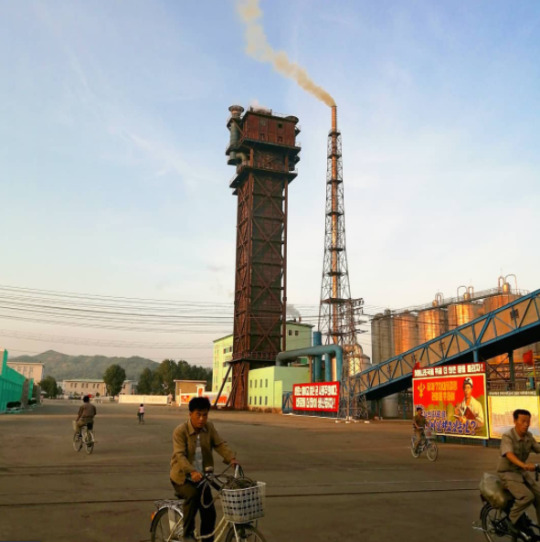
Hamhung's fertilizer plant, the biggest in North Korea.
When the war broke out, Hamhung was home to the largest nitrogen fertilizer plant in Asia. Since its product could be used in the creation of explosives, the existence of the plant is considered to have made Hamhung a target for U.S. aggression (though it's worth repeating that the U.S. carried out saturation bombings of most population centers in the country, irrespective of any so-called 'military value').
The plant was immediately rebuilt after the war, and—beyond its practical use—serves now as a monument of resistance to U.S. imperialism, and as a functional and symbolic site of self-reliance.
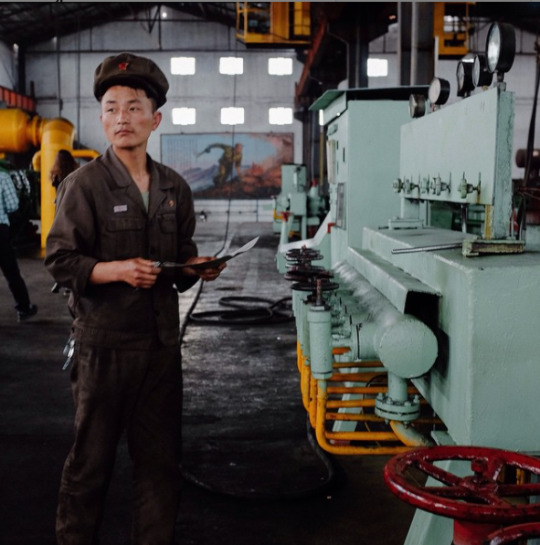
Chongjin, the third largest city in the DPRK.
Another coastal city and industrial hub. It underwent a massive development prior to the Korean war, housing around 300,000 people by the time the war broke out.
By 1953, the U.S. had destroyed most of Chongjin's industry, bombed its harbors, and killed one third of the population.
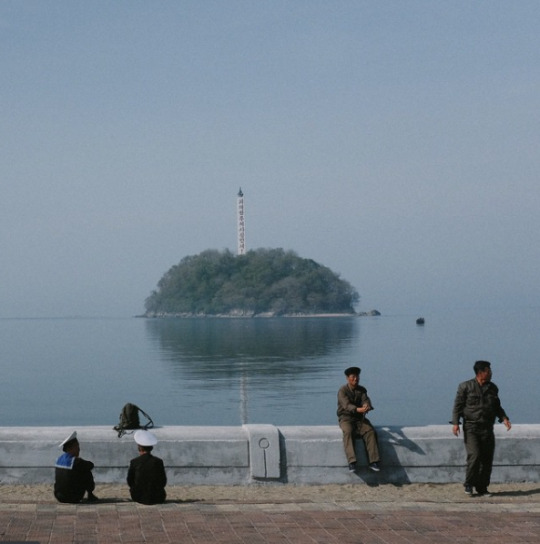
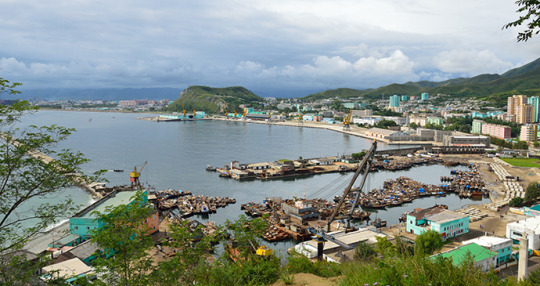

Wonsan, a rebuilt seaside city.
The city of Wonsan is a vital link between the DPRK's east and west coasts, and acts today as both a popular holiday destination for North Koreans, and as a central location for the country's growing tourism industry.
Considered a strategically important location during the war, Wonsan is notable for having endured one of the longest naval blockades in modern history, lasting a total of 861 days.
By the end of the war, the U.S. estimated that they had destroyed around 80% of the city.
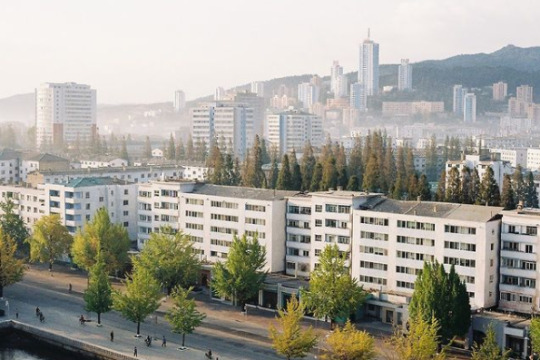

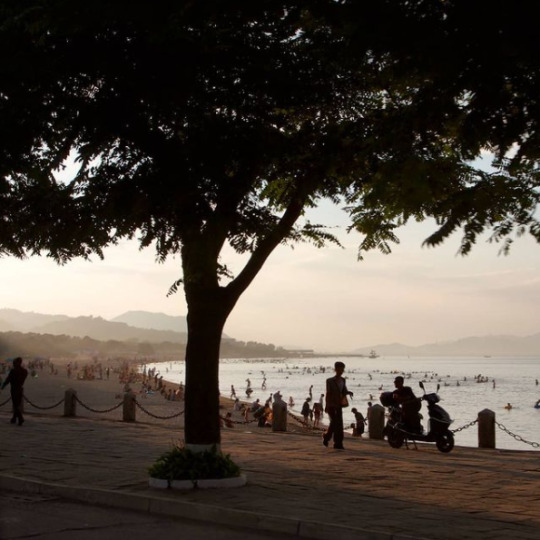

Masikryong Ski Resort, located close to Wonsan. It opened to the public in 2014 and is the first, I believe, that was built with foreign tourists in mind.
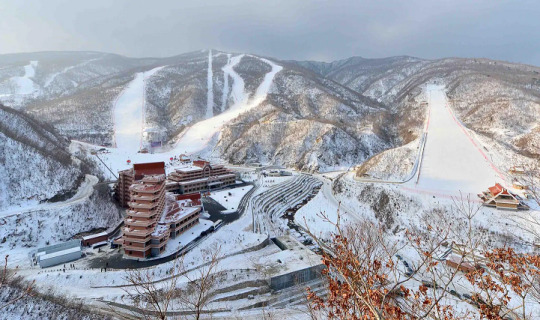
Sariwon, another rebuilt city
One of the worst hit cities during the Korean War, with an estimated destruction level of 95%.
I've written about its Wikipedia page here before, which used to mockingly describe its 'folk customs street'—a project built to preserve old Korean traditions and customs—as an "inaccurate romanticized recreation of an ancient Korean street."
No mention, of course, of the destruction caused by the US-led aerial bombings, or any historical context at all that could possibly even hint at why the preservation of old traditions might be particularly important for the city.
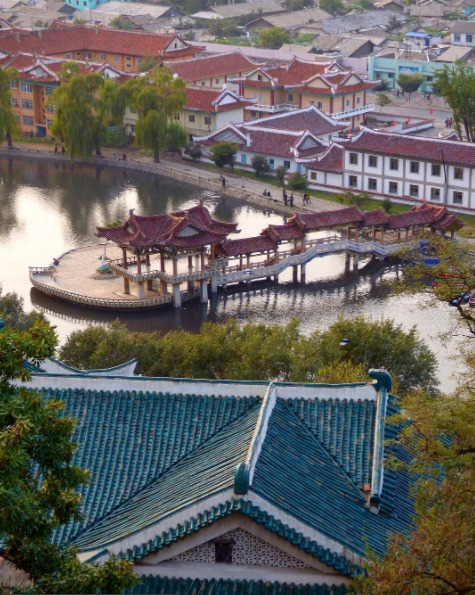

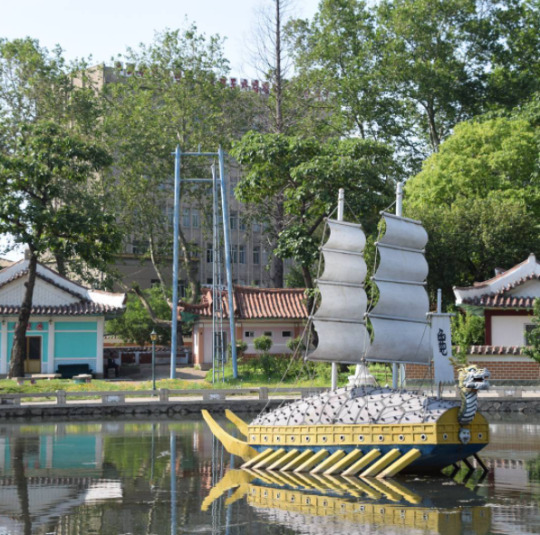
Life outside of the towns and cities
In the rural parts of the DPRK, life primarily revolves around agriculture. As the sanctions they're under make it difficult to acquire fuel, farming in the DPRK relies heavily on manual labour, which again, to avoid food shortages, requires that a large portion of the labour force resides in the countryside.
Unlike what many may think, the reliance on manual labour in farming is a relatively "new" development. Up until the crisis of the 1990s, the DPRK was a highly industrialized nation, with a modernized agricultural system and a high urbanization rate. But, as the access to cheap fuel from the USSR and China disappeared, and the sanctions placed upon them by Western nations heavily restricted their ability to import fuel from other sources, having a fuel-dependent agricultural industry became a recipe for disaster, and required an immediate and brutal restructuring.
For a more detailed breakdown of what lead to the crisis in the 90s, and how it reshaped the DPRKs approach to agriculture, check out this article by Zhun Xu.

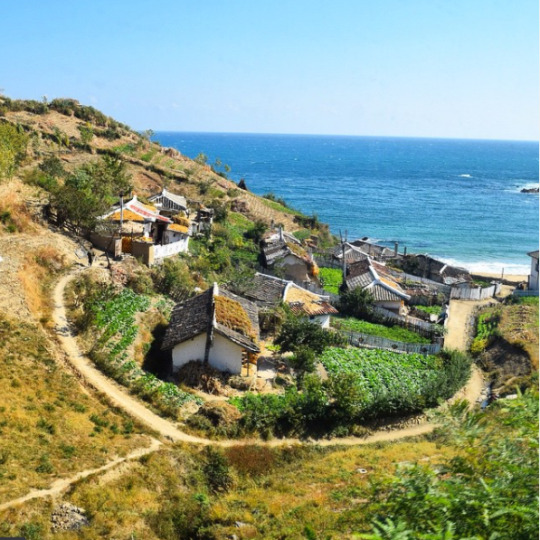
Some typical newly built rural housing, surrounded by farmland.
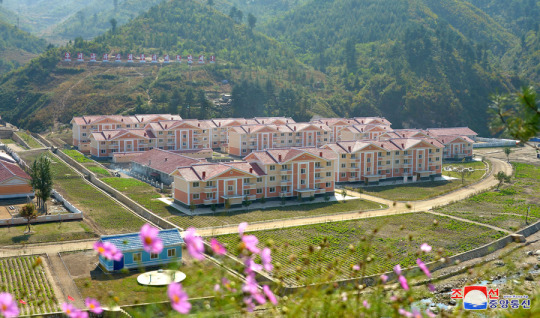
Tumblr only allows 20 pictures per post, but if you want to see more pictures of life outside Pyongyang, check out this imgur album.
#dprk#north korea#i've had this post unfinished in drafts for almost a year#also sorry about the spelling and potential formatting issues it's a nightmare to edit at this point#it was literally just meant to be a collection of picture and then the writing just sort of happened#enjoy the brief heritageposts history lesson i guess
6K notes
·
View notes
Text
saying “visual style" because, for example, if you would swap your current wardrobe for an identical, ethically made counterpart, there would be no visible change
#bearer of the curse#polls#I said a lot bc I don't wear a lot of what I enjoy due to sensory stuff and also like ... ethical considerations#btw I made this post bc I really don't like how some people think that people 'dress boring' simply bc theyre boring#like. fashion is not as accessible as it should be! to most people!#so i wanted to see how people felt#also fat people I love you I know a massive part of this inaccessibility is fatphobia in the fashion industry
6K notes
·
View notes